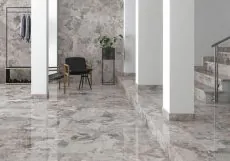The Rise of LED Screens and Displays: Transforming Visual Experiences
0 Views

In recent years, the world of visual technology has undergone a significant transformation, largely driven by the advent of LED screen and displays. These innovative technologies have revolutionized the way we consume information, enjoy entertainment, and engage with our surroundings. From large-scale outdoor billboards to sleek indoor displays, LED technology has become ubiquitous, enhancing our visual experiences in ways we never thought possible.
Understanding LED Technology
LED, or Light Emitting Diode, is a semiconductor device that emits light when an electric current passes through it. Unlike traditional lighting sources, LEDs are energy-efficient, long-lasting, and capable of producing vibrant colors. This technology has paved the way for the development of LED screens and displays, which are now widely used in various applications, including advertising, entertainment, and information dissemination.
The Advantages of LED Screens
One of the primary reasons for the widespread adoption of LED screens is their numerous advantages over traditional display technologies. Here are some key benefits:
- Energy Efficiency: LED screens consume significantly less power compared to older technologies like LCD and plasma displays. This energy efficiency not only reduces operational costs but also contributes to environmental sustainability.
- Brightness and Clarity: LED displays are known for their exceptional brightness and clarity. They can produce vivid colors and high contrast ratios, making them ideal for both indoor and outdoor use. Whether it’s a bright sunny day or a dimly lit room, LED screens maintain their visibility and impact.
- Durability: LED technology is inherently more durable than traditional display technologies. LED screens are less prone to damage from shocks and vibrations, making them suitable for a variety of environments, including outdoor settings.
- Versatility: LED displays come in various sizes and configurations, allowing for a wide range of applications. From large stadium screens to small digital signage, the versatility of LED technology makes it a preferred choice for many industries.
- Low Maintenance: LED screens require minimal maintenance compared to other display technologies. Their long lifespan and robust construction mean that they can operate for years without significant issues, reducing the need for frequent replacements.
Applications of LED Displays
The versatility of LED displays has led to their adoption across various sectors. Here are some notable applications:
1. Advertising and Marketing
One of the most prominent uses of LED screens is in advertising. Businesses utilize LED display to showcase their products and services in a dynamic and eye-catching manner. Digital billboards, for instance, can display multiple advertisements in a rotating format, maximizing exposure and engagement. The ability to change content quickly allows advertisers to respond to market trends and consumer preferences in real-time.
2. Entertainment
In the entertainment industry, LED screens have become a staple. Concerts, festivals, and sporting events often feature large LED displays that enhance the audience’s experience. These screens can display live feeds, graphics, and animations, creating an immersive environment that captivates viewers. Additionally, movie theaters are increasingly adopting LED technology for their screens, providing audiences with stunning visuals and vibrant colors.
3. Information Dissemination
LED displays are also widely used for information dissemination in public spaces. Airports, train stations, and bus terminals utilize LED screens to provide real-time updates on schedules, arrivals, and departures. This instant access to information enhances the overall travel experience and helps keep passengers informed.
4. Corporate and Educational Settings
In corporate environments, LED displays are used for presentations, meetings, and training sessions. Their clarity and brightness ensure that information is easily visible to all participants, regardless of the room’s lighting conditions. Similarly, educational institutions are incorporating LED screens into classrooms to facilitate interactive learning experiences.
The Future of LED Technology
As technology continues to evolve, the future of LED screens and displays looks promising. Innovations such as flexible LED displays, transparent screens, and even microLED technology are on the horizon. These advancements will further enhance the capabilities of LED displays, allowing for even more creative applications.
Moreover, the integration of smart technology with LED displays is set to revolutionize how we interact with visual content. Features such as touch interactivity, augmented reality, and connectivity with mobile devices will create new opportunities for engagement and personalization.
Conclusion
The rise of LED screens and displays has transformed the way we experience visual content. With their energy efficiency, durability, and versatility, LED technology has become an integral part of our daily lives. From advertising to entertainment and information dissemination, LED displays are enhancing our interactions with the world around us. As we look to the future, the continued evolution of LED technology promises to bring even more exciting developments, further enriching our visual experiences. Whether you’re a business owner, a tech enthusiast, or simply someone who enjoys the latest in visual technology, the impact of LED screens and displays is undeniable and will continue to shape our visual landscape for years to come.
- TAGS :
- LED Display
Related Posts

Why should you hire a matrimonial dispute lawyer for family conflicts?
Lucas Reed / August 19, 2025
Latest News from Nigeria Today: Breaking Stories Across Every Sector
Isabella / August 16, 2025
















